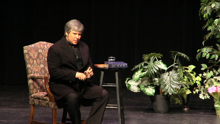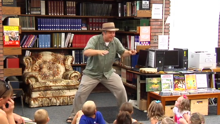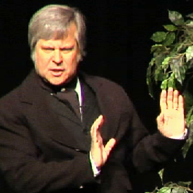Link hiking, biking trails with Kickapoo Creek
to create belt of parkland
by Brian "Fox" Ellis
from Peoria Journal Star June 10, 2001
If you would like to help create a green corridor around the Greater Peoria Area, from Dunlap to Bartonville, then send an e-mail to Peoria City Council and send a copy to the Peoria County Board. Ask them to plan for Peoria Area's long term health and economic vitality by creating a green corridor to surround the area and link existing hiking, biking and canoe trails!
I just returned from an ecstatic experience of kayaking on Kickapoo Creek. I put in where Farmington Road crosses the creek, fully expecting an urban paddling experience. But I was delightedly surprised to find a relatively wild, somewhat intact ecosystem.
The river was lined with a lush, verdant habitat for dozens of mammals, hundreds of birds and untold fish and insects. I am by no means an expert birder, but I was able to identify Baltimore orioles and bluebirds, a yellow-throated warbler and a redheaded woodpecker, bank swallows, cliff swallows and barn swallows. I chased up a mated pair of wood ducks and a pair of mallards. And I followed a great blue heron all morning. Every time I rounded a bend, there he was again.
This experience spawned a dream I would like to share. I would like to see public and private property along Kickapoo Creek linked to create a green corridor that embraces most of the Peoria area.
I know that Wildlife Prairie State Park and Jubilee College State Park both adjoin the creek. I also know that the Forest Park Foundation has purchased acreage within the watershed. Add to this Aspen Hills, Howard Kinsey, Leslie Rutherford and W.H. Sommer parks, and you have a total of several thousand acres already preserved within the drainage. The federal government recently acquired floodplain property downstream, and the Peoria Sanitary District has property at the mouth of the creek where it joins the Illinois River.
Tie all of this together and you already have most of the links in a chain of green to surround our city. If we can link together the underdeveloped Pimiteoui Trail with the soon to be expanded Rock Island Trial and what I would call the Kickapoo Creek Trail, then the city will be wrapped in a string of pearls.
Other cities have done it. The forest preserves begun at the turn of the century have made great strides in creating green belts around Chicago. The Des Plaines River Corridor is a good model for us to follow. Through a series of parks linked with bicycle and hiking paths, most of the Des Plaines River is protected.
There are many similar examples in other cities around the country. I was recently in Dallas-Fort Worth for a week of storytelling. The area has made astounding strides in linking and protecting open space along the Trinity River. While canoeing the Trinity in the heart of one of the largest urban areas in the country, I was in awe at how green and wild this corridor could be.
An intergovernmental agency there is charged with protecting water quality. Its director, John Promise, has produced award-winning videos and computer software to educate the public and provide resources for developers to think and act green. He has brought together more than 20 government agencies to hammer out a unified plan.
The Little Miami River, which empties into the Ohio River in Cincinnati, has achieved national recognition as a wild and scenic river. Most of the shoreline is privately owned. But through tax incentives, state and federal programs and public education, they have been able to achieve a standard usually reserved for wilderness streams.
Green corridors do many things for communities. They improve air quality, reduce pollution, increase property values and build a better sense of place. They can control sprawl and encourage smart development. In many tangible ways this type of project can improve the elusive goal known as "quality of life."
In this area, a green corridor seeded with wildflowers could act like a sponge to slow water flow, trap sediments and reduce erosion downstream. This makes for a cleaner creek and a cleaner river and reduced sedimentation.
Kickapoo Creek is a natural corridor for migrating birds and fish. It could easily be transformed into a natural corridor for human recreation. When I stopped on a sandbar to rest, I saw a fisherman, as well as the tracks of raccoons and coyotes, beavers and deer. Many animals use this valley to add to their quality of life.
The most heartwarming sight of the day was a rope swing over a deep pool. There were five teen-age girls sitting by a fire on the shore, just chatting and being girls. (Not watching videos or playing computer games!) This scene kindled in me a remembrance of my childhood, where many summer days were passed on the shore of a river. I also thought of my children and hoped there would be days like this for them and their offspring.
If any good has come from the problems with the Illinois River Valley and the siltation of the Peoria lakes, it is this: We are beginning to think beyond the thin blue line. A river is much more than a line on a map. So let this be a call to action for our civic leaders to think of long-term preservation efforts. Let this be an opportunity for private and public interests to work together for the future of our region.
Brian "Fox" Ellis of Peoria is an environmentalist, speaker, storyteller and author. He spends his springs researching river history and ecology and his summers on the Spirit of Peoria, entertaining and informing passengers about the Illinois. His book Exploring the Illinois River, is an activity book about Illinois history that uses the river as a time line. It is available on the Spirit of Peoria and at some near-river gift shops.









